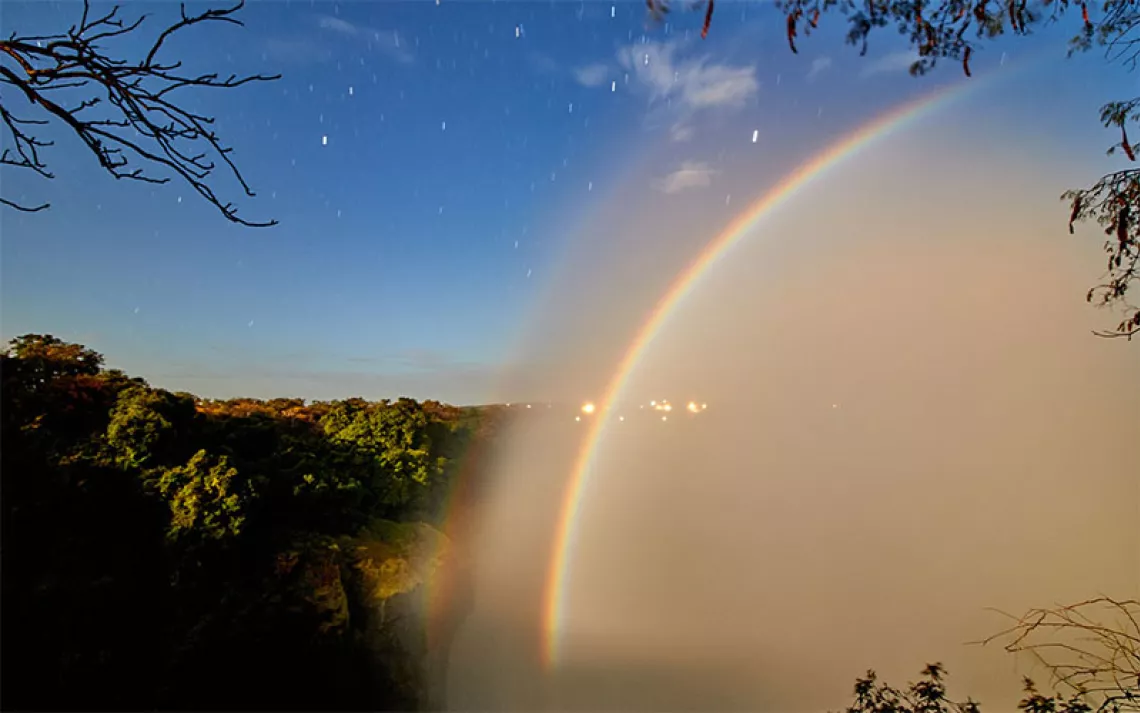August Observing Highlight: Perseid Meteors
Tips for viewing one of summer's greatest natural light shows

A Perseid meteor | Photograph courtesy of ESO/S. Guisard
One of the most anticipated astronomical events every summer is the Perseid meteor shower. Around August 12, the sky lights up with up to 90 “falling stars” an hour. Some astronomers are predicting that 2016 will be an especially good year, with a possible outburst in the hours prior to the usual peak of activity.
You can start looking earlier in the week for the dusty debris left behind by Comet Swift-Tuttle and watch it turn into fiery ash on contact with our atmosphere. If you see a streaking meteor, trace it back from where it came and see if you land in the northeast, which is where the constellation Perseus currently is. If so, then you’ve spotted a Perseid meteor. Other dust and debris is entering earth’s atmosphere all the time, however, so don’t be surprised if meteors emanate from other spots in the sky, too. Be sure to turn off all porch, garage, and inside lights to keep from ruining your night vision and your chance to see the meteors.
Planetary Party in the West

Sign up to receive Sierra News & Views
Get articles like this one sent directly to your inbox weekly.
With this action you affirm you want to receive Sierra Club communications and may vote on policy designated by the Sierra Club Board.
In August, three planets are close to the horizon in the west after sunset. Venus is the closest but also the brightest of the planets, shining at magnitude -3.9. On August 3, you may be able to glimpse the day-old new moon as a thin crescent sitting on the horizon before it sets. Venus will be just above the moon with the star Regulus to its left and Mercury still more to the upper left. Jupiter will be farthest to the upper left and brighter than Mercury or Regulus.
On August 4, Venus and Regulus will be a bit more than a degree apart, while the crescent moon and Mercury will be under 2 degrees apart. On August 5, the moon jumps once again, this time pairing with Jupiter. All this activity happens soon after sunset, so if you wait too long to take a look, you’ll miss it.
Later in the month, Mercury and Venus slide to the west along the horizon, and Jupiter rushes down to meet them, making for some interesting conjunctions. But before that happens, watch the moon meet up with the other two naked-eye planets on August 11. By this date, the moon is becoming gibbous as it makes a triangle with Mars and Saturn. Mars is the fairly bright and reddish disk of light that has been in the southern sky all summer. Saturn is a bit dimmer and to the upper left of Mars. The moon will be to the upper right of Saturn on the evening of August 11.
Mars and Saturn will have a close encounter of their own, as Mars glides below the Ringed Planet from about August 18 to August 28. They’re closest on August 23 and 24 at under 4½ degrees apart. Mars also gets within less than 2 degrees of its rival, Antares, which will be just below it on these nights. This is a perfect opportunity to get out a telescope and look at Saturn’s rings and its largest moon Titan as well as the surface of Mars—any light markings indicate clouds or ice caps. While you are at it, compare the color of reddish Mars and Antares, and try to spot the globular cluster M4, just over a degree to the right and a little below Antares. Mars will cross the Milky Way throughout September, and encounter more globular clusters.
On August 18, in the west, right above the horizon after sunset you can catch Mercury directly below Jupiter with Venus to their right. Venus is the brightest of the three planets, followed by Jupiter and then Mercury. By August 24, you should notice that Venus is creeping closer and closer to Jupiter, culminating on August 27 when Venus nearly passes in front of Jupiter. The two planets will be an incredible 3 arcminutes apart, or 1/10 the size of the full moon. If you look through a telescope, you’ll notice Jupiter’s four Galilean moons all on the same side of the planet as Venus. The two planets will look so strange and extraordinary that you may not even notice little Mercury to the lower left, dipping below the horizon.
All five of the “classical” planets—those known since ancient times—are in good observing position on August 18. However, a full moon overnight from August 17 to August 18 will mean the moon will be big and bright as it rises on the 18th, washing out the sky. It will appear in the east, and your targets will be in the south and west, so you should still be able to have at least a decent view of the planets.
 The Magazine of The Sierra Club
The Magazine of The Sierra Club



